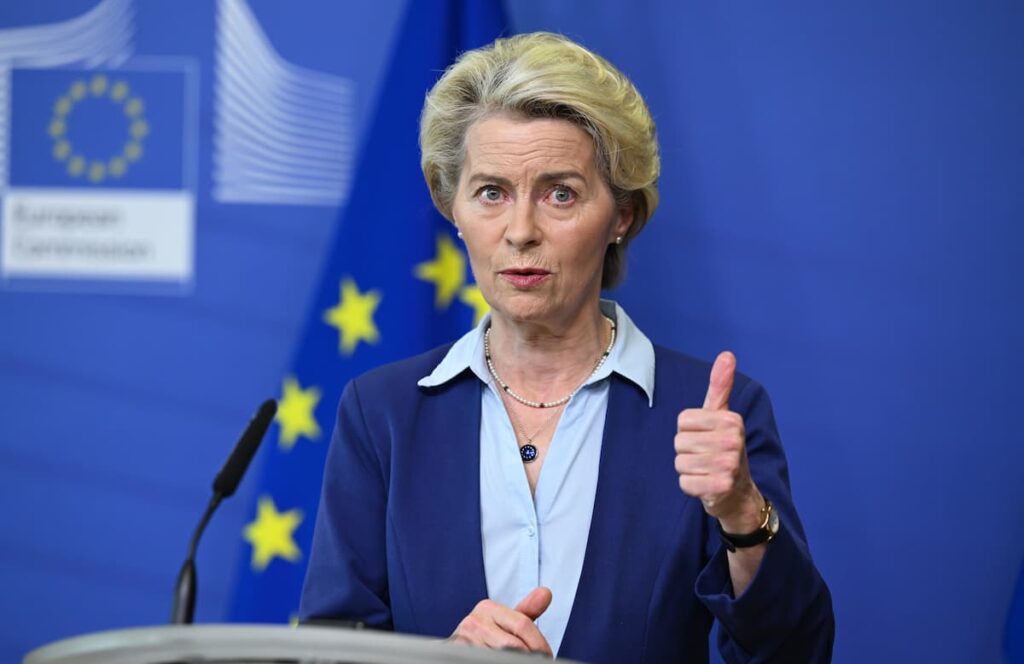A Historic Budget Shift for a New Era
The European Union is preparing to enter a new financial chapter, as Commission President Ursula von der Leyen unveiled a €2 trillion budget proposal covering the period between 2028 and 2034. Marking a major departure from previous frameworks, this budget aims to reshape the bloc’s financial priorities in response to years of unprecedented challenges including the COVID-19 pandemic, the war in Ukraine, and economic pressure from global rivals.
Compared to the €1.21 trillion approved in 2020, this new figure reflects a significant increase and is being presented as the most ambitious proposal ever put forward by the European Commission. Its design is rooted in flexibility and strategic thinking, built to respond to both internal and external uncertainties.
The financial blueprint is expected to spark intense negotiations between EU member states and the European Parliament, as national interests compete for a share of the funds. The focus is clear: the EU intends to move away from traditional spending and invest in areas seen as critical for its long-term resilience and autonomy.
Three Strategic Pillars to Reinforce the Union
At the core of the proposal are three financial pillars designed to realign the EU’s budgetary priorities:
- The first pillar, National and Regional Partnerships, consolidates funding for agriculture, fisheries, cohesion, and social policy. It accounts for €865 billion. Notably, this merges the Common Agricultural Policy and cohesion funds, historically the largest items in EU budgets. These areas face cuts that are likely to generate friction with southern and eastern nations reliant on these funds.
- The second pillar, European Competitiveness Fund, allocates €410 billion for boosting research, innovation, technology, and industrial resilience. This fund reflects increasing concern about the EU’s lag in competitiveness compared to the United States and China. The goal is to attract private capital to amplify public investment impact.
- The third pillar, Global Europe, assigns €200 billion to external actions, including a new €100 billion fund dedicated to Ukraine’s recovery and reconstruction. This replicates the structure of a previously established support mechanism designed to safeguard aid flows from internal political disputes.
Beyond the main pillars, an additional €292 billion is reserved for other programs, including debt repayments.
Funding Sources and Fiscal Discipline
The funding strategy for this expanded budget combines traditional member state contributions with proposed new sources of EU-wide revenue. The Commission plans to introduce taxes on corporate profits, tobacco, and electric waste, and to enhance existing mechanisms like the Emissions Trading System and customs duties. The goal is to increase the EU’s fiscal autonomy and reduce dependence on national treasuries.
One critical change in the budget structure is the inclusion of strict conditionality tied to the rule of law. Access to EU funds will now depend on adherence to democratic standards, a direct response to past controversies involving certain member states. This marks a shift toward tighter governance and accountability within the bloc.
A major portion of the new budget also addresses legacy costs. The EU expects to repay about €24 billion annually for debt incurred through COVID-era recovery efforts. The Commission argues that these repayments should be covered entirely through its own resources, though gaining consensus on new taxes remains a political challenge.
Tensions Ahead in the EU’s Financial Rebalancing
While the proposal is hailed by some as a bold and necessary shift, it also opens a new chapter of political tension within the EU. Countries benefiting most from traditional subsidies may resist the reallocation of funds, especially with agricultural and cohesion cuts on the table. On the other hand, states prioritizing innovation, defense, and energy security are likely to support the transformation.
The inclusion of long-term funding for Ukraine reinforces the EU’s geopolitical role and reflects concerns about waning US support. By embedding this aid in the core budget, Brussels seeks to shield it from vetoes and ensure stable assistance to Kyiv.
Overall, the €2 trillion framework sets the tone for a decade of transformation, pushing the EU to become more self-sufficient, agile, and globally competitive. But achieving unity around this vision will require overcoming deep-rooted divisions and navigating a lengthy negotiation process.


